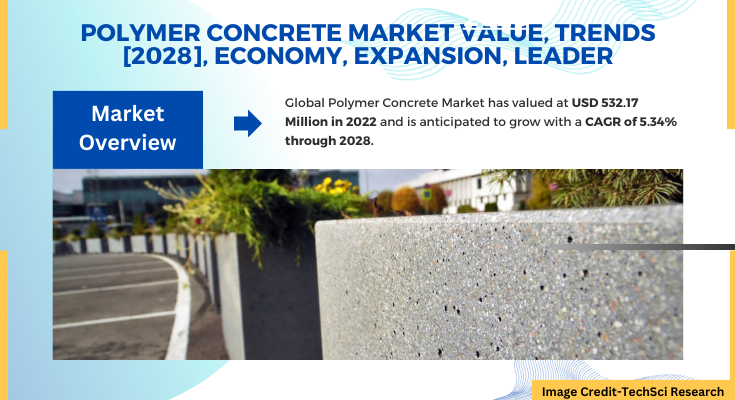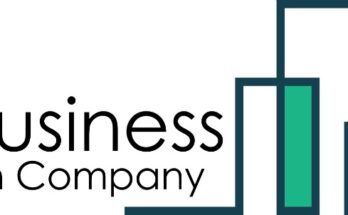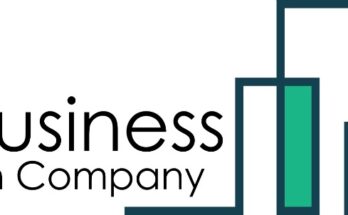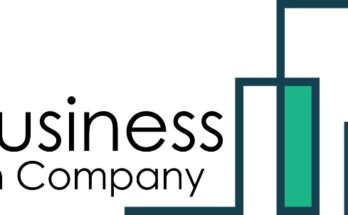According to TechSci Research report, “Polymer Concrete Market –Global Industry Size, Share, Trends, Opportunity, and Forecast, 2018-2028F”, the Global Polymer Concrete Market stood at USD 532.17 Million and is anticipated to register a CAGR of 5.34% during the forecast period. This can be ascribed to collaborations and partnerships among leading companies with a diverse approach to merge the expertise of individual companies and strengthen their position in the market.
The construction industry, a pivotal driver of human progress, is currently experiencing a remarkable revolution propelled by technological advancements. Amidst the array of pioneering materials reshaping the sector, polymer concrete has emerged as a prominent contender. With its unparalleled durability, strength, and versatility, polymer concrete is rapidly gaining prominence as the preferred material for architects, engineers, and developers across the globe. Technological strides in polymer chemistry have led to the development of high-performance resins with enhanced properties, such as superior adhesion, improved chemical resistance, and tailored curing profiles. These advancements ensure that polymer concrete not only meets but exceeds the stringent demands of modern construction. The integration of intelligent additives and modifiers enhances the performance of polymer concrete. These additives have the potential to enhance key characteristics such as crack resistance, flexural strength, and fire resistance. By leveraging advanced additives, engineers can precisely tailor polymer concrete formulations to meet precise project specifications.
One of the innovations in concrete technology is translucent concrete, which incorporates optical fibers to create a material that allows light to pass through. This can have aesthetic and functional applications in architectural design. Researchers have developed self-cleaning concrete that uses photocatalytic materials to break down pollutants when exposed to sunlight. This technology can help reduce maintenance requirements and improve air quality in urban areas. Governments often incorporate polymer concrete into public infrastructure projects such as roads, bridges, and transportation networks. These projects serve as high-visibility platforms to showcase the material’s durability, longevity, and cost-effectiveness. Governments can influence the polymer concrete market by adopting procurement policies that prioritize the use of advanced construction materials like polymer concrete in public projects. This creates a steady demand and market for the material. Government-funded demonstration projects exemplify the practical applications and advantages of polymer concrete. These projects serve as exemplars for sustainable construction, inspiring developers, and builders to embrace the material in their endeavors. As the demand for high-performance, durable, and eco-friendly materials surges, collaborations and partnerships have emerged as powerful drivers propelling the growth and evolution of the polymer concrete market on a global scale.
Browse over XX market data Figures and spread through XX Pages and an in-depth TOC on “Global Polymer Concrete Market” @ https://www.techsciresearch.com/report/global-polymer-concrete-market/2225.html
Complex construction projects often require specialized materials that can meet specific demands. Collaborations between polymer concrete manufacturers and project developers result in tailored solutions designed to withstand unique challenges, such as heavy loads, corrosive environments, or extreme weather conditions. Moreover, partnerships between polymer concrete producers and sustainability-focused organizations lead to the development of eco-friendly formulations that align with the principles of sustainable construction.
These partnerships drive the integration of recycled materials, reduced carbon footprints, and energy-efficient production methods. Collaborations with esteemed research institutions and prestigious academic centers significantly contribute to the enrichment of knowledge and refinement of technology. These invaluable partnerships lead to revolutionary advancements in material science, testing methodologies, and performance evaluation, ultimately enhancing the credibility and widespread acceptance of polymer concrete within the construction industry.
However, the limited availability of raw materials and disruptions in the supply chain along with a shortage of skilled labor are expected to slow down the growth of the market in the coming years. As the global polymer concrete market continues to advance, collaborations remain a vital component in establishing a strong foundation for sustainable construction practices worldwide.
The Global Polymer Concrete Market segmentation is based on Type, Class, Binding Agent, Application, End User Industry, By Company, and Region
In 2022, the polymer concrete market was predominantly led by the polymer modified concrete (PMC) segment, with expectations of continued growth in the years ahead. PMC stands out for its superior bonding properties, making it an ideal choice for repair and rehabilitation projects. Its strong adhesion to various substrates, especially existing concrete surfaces, enhances structural integrity significantly. Additionally, PMC is often available in pre-mixed formulations, simplifying handling and application processes, which can lead to expedited project timelines. The incorporation of polymer resins into concrete matrices elevates mechanical properties such as flexural and tensile strength, impact resistance, and durability. These enhancements render PMC suitable for applications necessitating robust structural integrity and high load-bearing capacities.
The Asia Pacific region has emerged as the leading player in the Global Organic Acid market, driven by substantial economic growth and rapid urbanization trends. As urban centers expand and infrastructure development takes precedence, the demand for advanced construction materials like polymer concrete has surged.
Significant investments in infrastructure projects across the region, including roads, bridges, airports, railways, and public utilities, have propelled the adoption of polymer concrete due to its exceptional durability, strength, and resistance to environmental factors. With an increasing focus on sustainability and environmental stewardship, the eco-friendly properties of polymer concrete have garnered considerable attention in the Asia Pacific market, aligning well with the growing demand for sustainable construction practices. Many countries in the region are investing in research and development (R&D) initiatives aimed at advancing construction materials, particularly in polymer science and concrete technology, leading to the development of improved formulations of polymer concrete.
Some of the major companies operating in the Global Polymer Concrete Market include:
- ACO Polymer
- BASF SE
- Sika AG
- Fosroc International Ltd.
- Sauereisen
- Dudick
- ErgonArmor
- Base Tec
To Download FREE Sample Pages of this Report📥 @ https://www.techsciresearch.com/sample-report.aspx?cid=2225
Customers can also request for 10% free customization on this report.
“Certain regions, particularly the Asia-Pacific, are projected to exert significant demand for polymer concrete worldwide. The growth in the competitive landscape and the presence of well-established companies in the market, committed to enhancing their polymer concrete productivity each year, are expected to contribute to a remarkable growth of the Global Polymer Concrete Market in the forecast period,” said Mr. Karan Chechi, Research Director with TechSci Research, a research-based Global management consulting firm.
Global Polymer Concrete Market By Type (Epoxy, Methyl Methacrylate & Others), By Class (Polymer Modified Concrete & Others), By Binding Agent (Natural Resin & Synthetic Resin), By Application (Containments, Pump Bases, Waste Containers, Flooring Blocks, Trench Drains, Others), By End User Industry (Non-residential structures, Infrastructure, Residential), By Region, Competition, Forecast & Opportunities, 2018-2028F has evaluated the future growth potential of Global Polymer Concrete Market and provides statistics & information on market size, structure, and future market growth. The report intends to provide innovative market intelligence and help decision makers take sound investment decisions. Besides, the report also identifies and analyzes the emerging trends along with essential drivers, challenges, and opportunities in the Global Polymer Concrete Market.
You may also read:
Antistatic Agents Market Worth [2028], Overview, Trends, Forecast
Anhydrous Hydrogen Fluoride Market [2028] Key Trends and Strategies for Expansion
Aqueous Polyurethane Dispersion Market Analysis, Development [2028], Key Terms
Table of Content-Polymer Concrete Market
- Product Overview
1.1. Market Definition
1.2. Scope of the Market
1.2.1. Markets Covered
1.2.2. Years Considered for Study
1.2.3. Key Market Segmentations
- Research Methodology
2.1. Objective of the Study
2.2. Baseline Methodology
2.3. Key Industry Partners
2.4. Major Association and Secondary Sources
2.5. Forecasting Methodology
2.6. Data Triangulation & Validation
2.7. Assumptions and Limitations
- Executive Summary
3.1. Overview of the Market
3.2. Overview of Key Market Segmentations
3.3. Overview of Key Market Players
3.4. Overview of Key Regions/Countries
3.5. Overview of Market Drivers, Challenges, Trends
- Voice of Customer
- Global Polymer Concrete Market Outlook
5.1. Market Size & Forecast
5.1.1. By Value
5.2. Market Share & Forecast
5.2.1. By Type (Epoxy, Methyl Methacrylate & Others)
5.2.2. By Class (Polymer Modified Concrete & Other)
5.2.3. By Binding Agent (Natural Resin & Synthetic Resin)
5.2.4. By Application (Containments, Pump Bases, Waste Containers, Flooring Blocks, Trench Drains, Others)
5.2.5. By End User Industry (Non-residential structures, Infrastructure, Residential)
5.2.6. By Region
5.2.7. By Company (2022)
5.3. Market Map
- North America Polymer Concrete Market Outlook
6.1. Market Size & Forecast
6.1.1. By Value
6.2. Market Share & Forecast
6.2.1. By Type
6.2.2. By Class
6.2.3. By Binding Agent
6.2.4. By Application
6.2.5. By End User Industry
6.2.6. By Country
6.3. North America: Country Analysis
6.3.1. United States Polymer Concrete Market Outlook
6.3.1.1. Market Size & Forecast
6.3.1.1.1. By Value
6.3.1.2. Market Share & Forecast
6.3.1.2.1. By Type
6.3.1.2.2. By Class
6.3.1.2.3. By Binding Agent
6.3.1.2.4. By Application
6.3.1.2.5. By End User Industry
6.3.2. Mexico Polymer Concrete Market Outlook
6.3.2.1. Market Size & Forecast
6.3.2.1.1. By Value
6.3.2.2. Market Share & Forecast
6.3.2.2.1. By Type
6.3.2.2.2. By Class
6.3.2.2.3. By Binding Agent
6.3.2.2.4. By Application
6.3.2.2.5. By End User Industry




